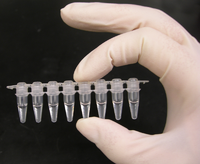
Photo from wikipedia
During wine production, some yeasts enter a Viable But Not Culturable (VBNC) state, which may influence the quality and stability of the final wine through remnant metabolic activity or by… Click to show full abstract
During wine production, some yeasts enter a Viable But Not Culturable (VBNC) state, which may influence the quality and stability of the final wine through remnant metabolic activity or by resuscitation. Culture-independent techniques are used for obtaining an accurate estimation of the number of live cells, and quantitative PCR could be the most accurate technique. As a marker of cell viability, rRNA was evaluated by analyzing its stability in dead cells. The species-specific stability of rRNA was tested in Saccharomyces cerevisiae, as well as in three species of non-Saccharomyces yeast (Hanseniaspora uvarum, Torulaspora delbrueckii and Starmerella bacillaris). High temperature and antimicrobial dimethyl dicarbonate (DMDC) treatments were efficient in lysing the yeast cells. rRNA gene and rRNA (as cDNA) were analyzed over 48 h after cell lysis by quantitative PCR. The results confirmed the stability of rRNA for 48 h after the cell lysis treatments. To sum up, rRNA may not be a good marker of cell viability in the wine yeasts that were tested.
Journal Title: International journal of food microbiology
Year Published: 2018
Link to full text (if available)
Share on Social Media: Sign Up to like & get
recommendations!